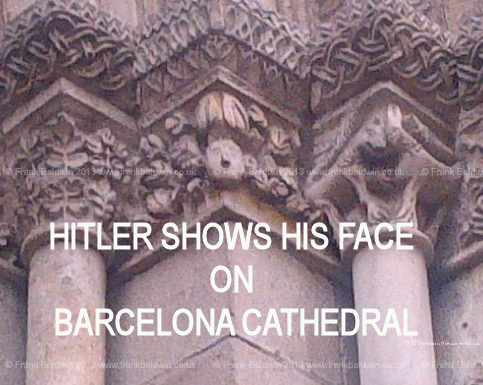
People do not normally visit Barcelona for its military history. It’s more associated with Catalan culture, football, art, architecture, tapas bars, beaches and clubs. But it also has some interesting military history, starting with the legend of its foundation by Hamlicar Barca, the Carthaginian General who fathered Hannibal, and the archaeological evidence of the Roman Colonia founded for ex-Legionaries. There are at least three episodes from its past which are well worth exploring.
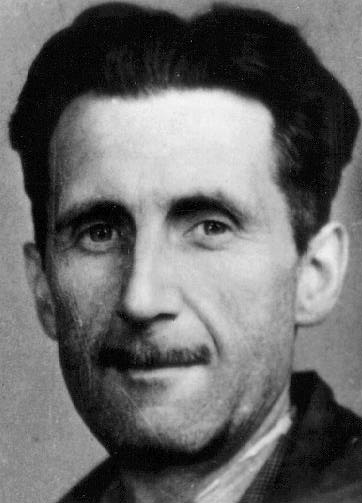
The most visible is the legacy of the city’s role in the Spanish Civil War when it was a staunch supporter of the Republican side. The army’s coup attempt in the city in 1936 was defeated by the armed trade union militia, paradoxically mainly by well organised anarchists. The city became the capital for the Republic after Madrid came under ground attack. One of its most popular streets, the Ramblas, became the front line in the civil war within the civil war between the Stalinist, Trotskyist and anarchist militias. The British Volunteer, Eric Blair was stationed on the rooftops on the Ramblas. His experiences and disillusionment became the inspiration for the works he published as Animal Farm and 1984 under the name George Orwell.
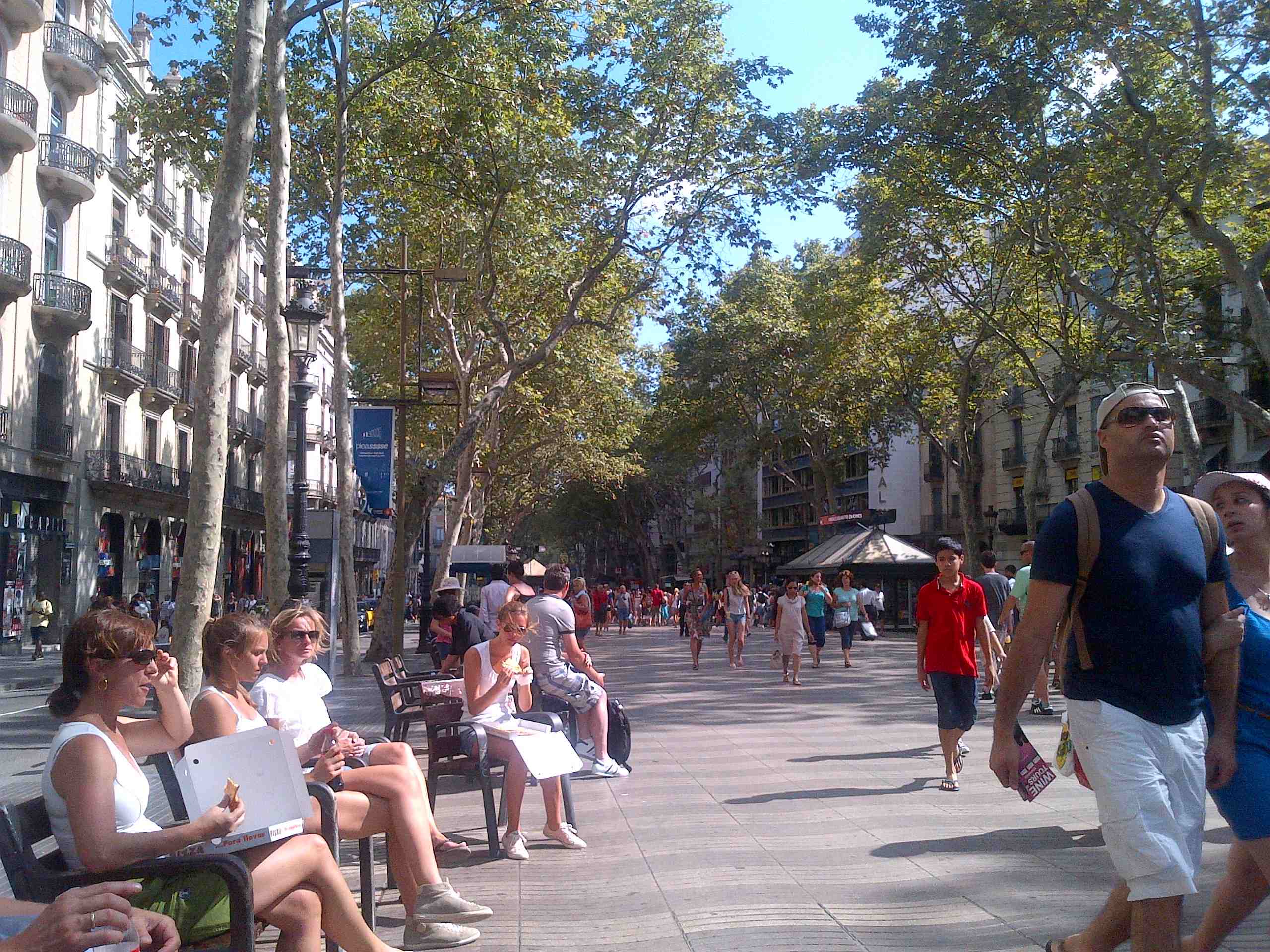
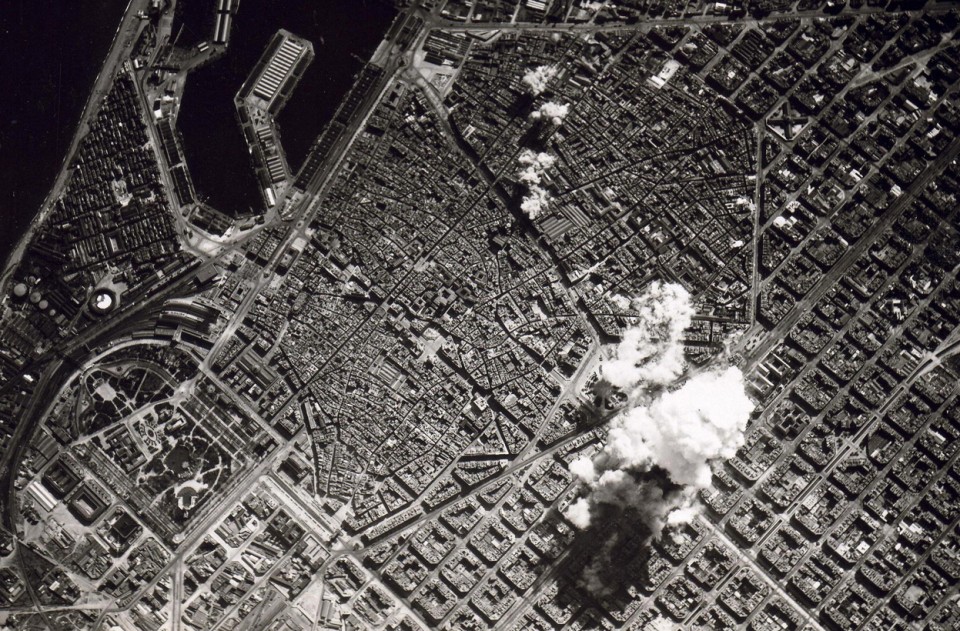
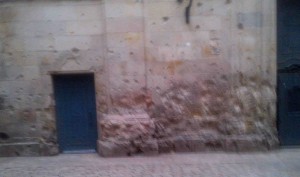
The bitter and sad story of the Spanish Civil War deserves to be better known. It is much more complicated than a simple story of good versus evil or communists against fascists. The evidence of the savagery and cost of the war is visible across the city. The bomb splintered façade of the church of Sant Felip Neri is witness to the deaths of 42 civilians, mainly children, when Italian aircraft bombed the city in March 1938. The damage to the Gaudi Church of the Sagrada Família and the barren church interiors are a reminder of the bitter anti clerical passions among the Republicans. The names in Fort Montjuïc mark the cells where Republican political leaders were held, tortured and executed, in Franco’s post war campaign to exterminate political opposition. It is still a sensitive topic across Spain, and avoided in the aftermath of Franco’s death, while the country made a transition to Democracy and EU membership.
The Spanish Civil War is a case study with lessons for the modern world. The debate about whether, when and how the world should intervene in a civil war is a live and current concern with images from Egypt and Syria in the media.

Fort Montjuïc on the hill south of the city and port was key to the defence of the city. It was the site of the oppida, the pre Roman site. In the Catalan wars of the 1640s the hill was fortified by the inhabitants and key to protecting the city from attack. In the war of Spanish

Succession 1705 Barcelona surrendered after the Anglo imperial forces assaulted the fort and it played a key part in the recapture of the city by the Bourbons in the siege of 1713-14. The fort is in an excellent position and well preserved, with coastal artillery batteries with C19th and C20th guns. The fort held a military museum assembled in the Franco era until 2009, when the collection was disbursed, which may itself indicate the sensitivity of the Civil War. The fort can be reached by a combination of cable car and funicular railway from Parallel metro, or via the cross harbour cable car from Barceloneta, by bus or walking.
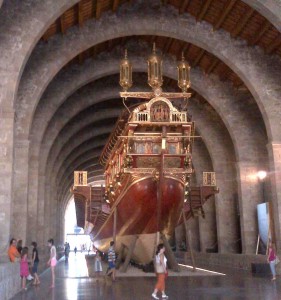
The city’s maritime museum is a gem with links to one of the most important naval battles in history. The museum is in the old Royal Catalan and Spanish naval ship yard where merchant and war ships were built in a Gothic stone building. The museum contains a replica of the 235 tonnes, 60m “Real,” the galley which served as the flagship of Don John of Austria, at the battle of Lepanto in 1571. The original Real had a crew of 400 sailors and soldiers in addition to 290 oarsmen and was armed with three heavy and six light cannons.
The battle of Lepanto was one of the largest and most significant naval battles in history and took place in the Ionian sea off Greece on 7th October 1571. 212 ships of the Holy League (Spain, Venice and the Papal states) under Don John, manned by 28,500 soldiers and C 25,000 sailors and oarsmen faced 250 Turkish ships manned by 31,400 soldiers and 50,000 sailors and oarsman under Ali Pacha. This is more ships and men than took part in the largest naval battles of Jutland (1916) and Leyte Gulf in the C20th World Wars and approximately eight times as many ships and men as took part in the famous battle of Trafalgar (1805)
At Lepanto the Real engaged the Turkish galley Sultana, flagship of Ali Pacha in deck to deck combat. The Spanish troops boarded the Sultana and after about an hour of bloody fighting captured her. Ali Pacha was severely wounded by musket fire, fell to the deck, and was beheaded by a Spanish soldier. His head was displayed on a pike, severely affecting the morale of his troops. The Real captured the “Great Flag of the Caliphs” and became a symbol of the victory at Lepanto.
The battle was a decisive victory for the Holy League. The Turks lost 80 ships sunk and 130
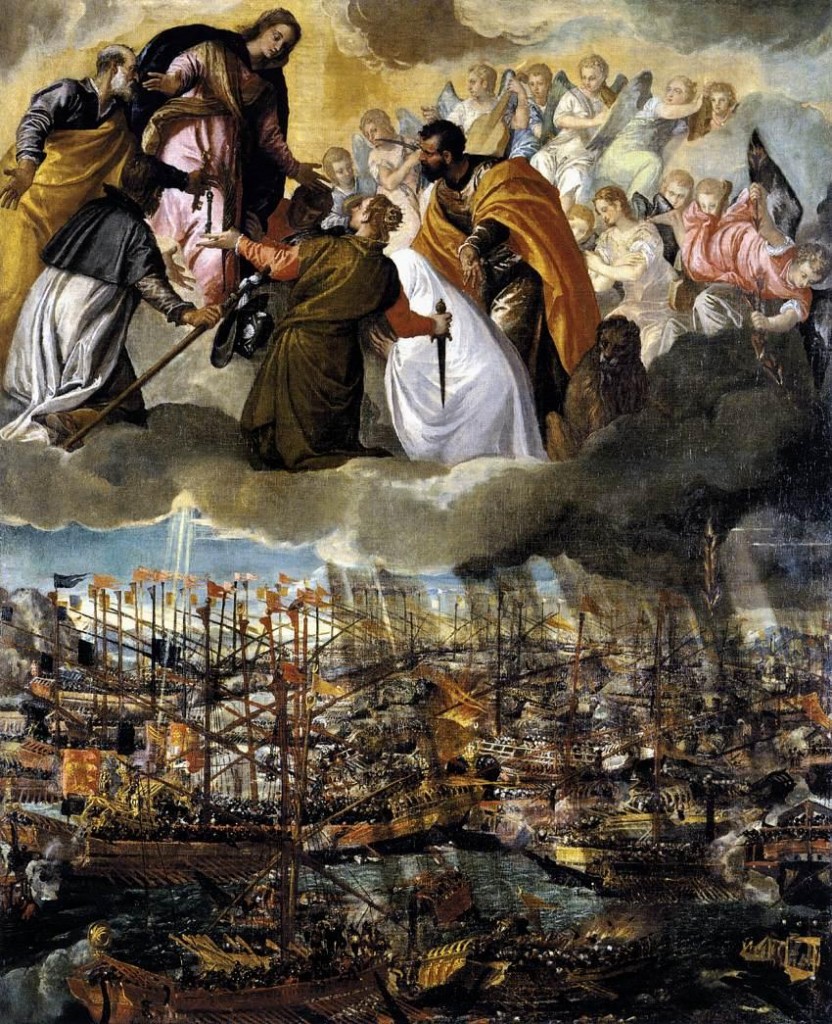
captured, with the loss of 20,000 Turks killed, captured or wounded and the release of 12,000 Christian galley slaves. One of the c.7,500 Holy League casualties was Miguel de Cervantes, the author of Don Quixote. The battle ended Turkish naval supremacy in the Mediterranean and inspired paintings and poetry. Barcelona Cathedral contains a further artefact from the battle of Lepanto, the Christ of Lepanto, carried in on a Spanish Galley. The body of Christ is supposed to have moved to avoid cannon shot during the battle!
Galley warfare of slaves at the oars, and hand to hand combat may seem archaic to Britons whose image of naval warfare is based on the kinds of sailing ships used by sea dogs from Drake to Nelson. But the battle of Lepanto took place 26 years after the English carrick, the Mary Rose was lost while engaging French galleys in the Solent and only seventeen years before the Spanish Armada.
The nearest Metro is Drassanes close to the Colon which commemorates the return of Christopher Columbus to Spain after his first voyage and reception by Ferdinand and Isabella. The Museum café is in a quiet garden with a fish-pond and is a good place to contemplate the war galleys which dominated naval warfare in the Mediterranean for over two millennia – or to take a break from sight seeing.
If you are interested in travelling to battlefield heritage in Barcelona or elsewhere in Span contact me via Baldwin Battlefield Tours
PS Hitler fought in Ypres in 1914. The Battlefield Trust is organising a fund raising event at lunchtime on 10th September 2013 with a lunch and a talk given by Col (retd) Christopher Newbould on the British Army at Wipers. Details here.
